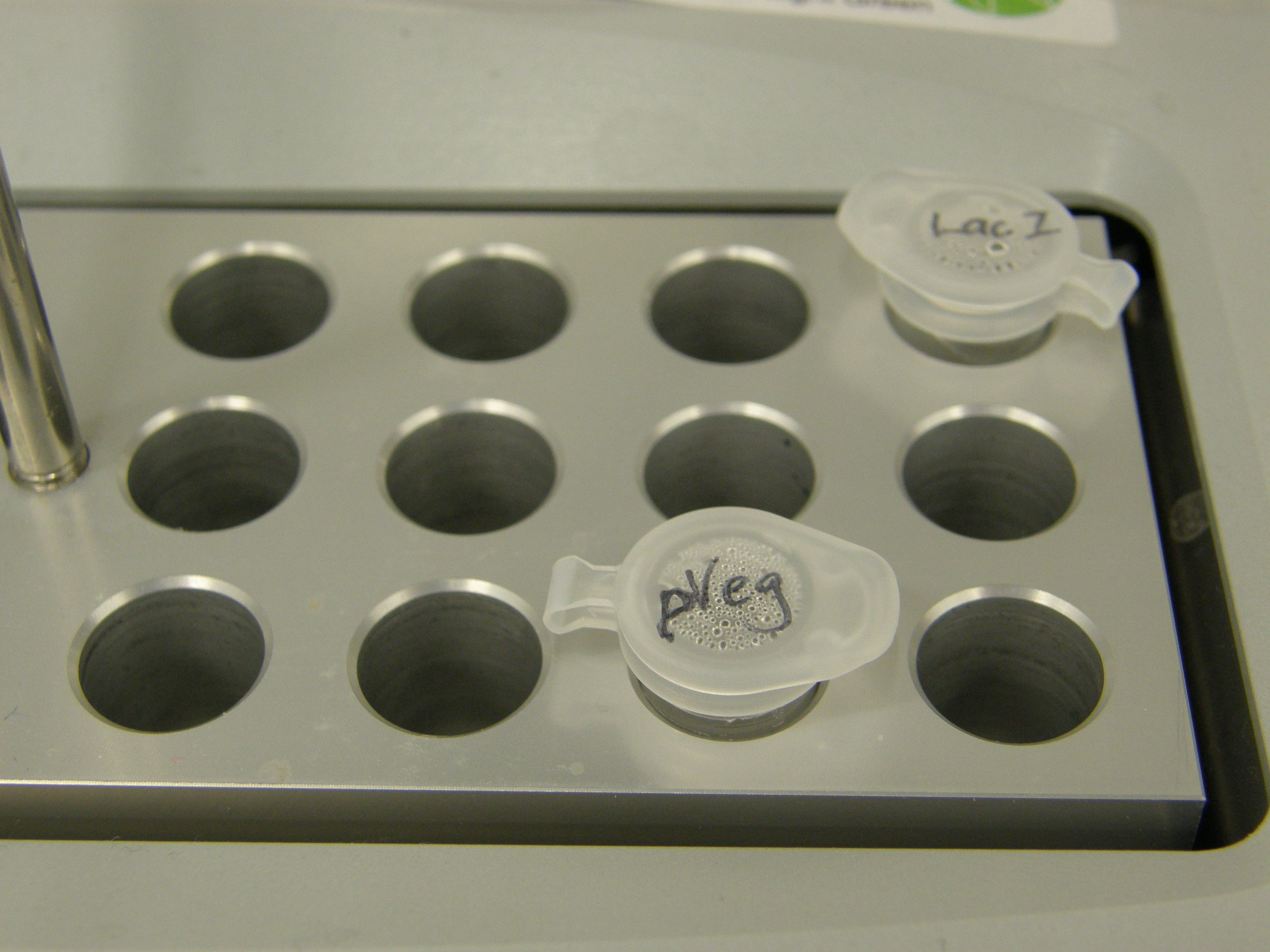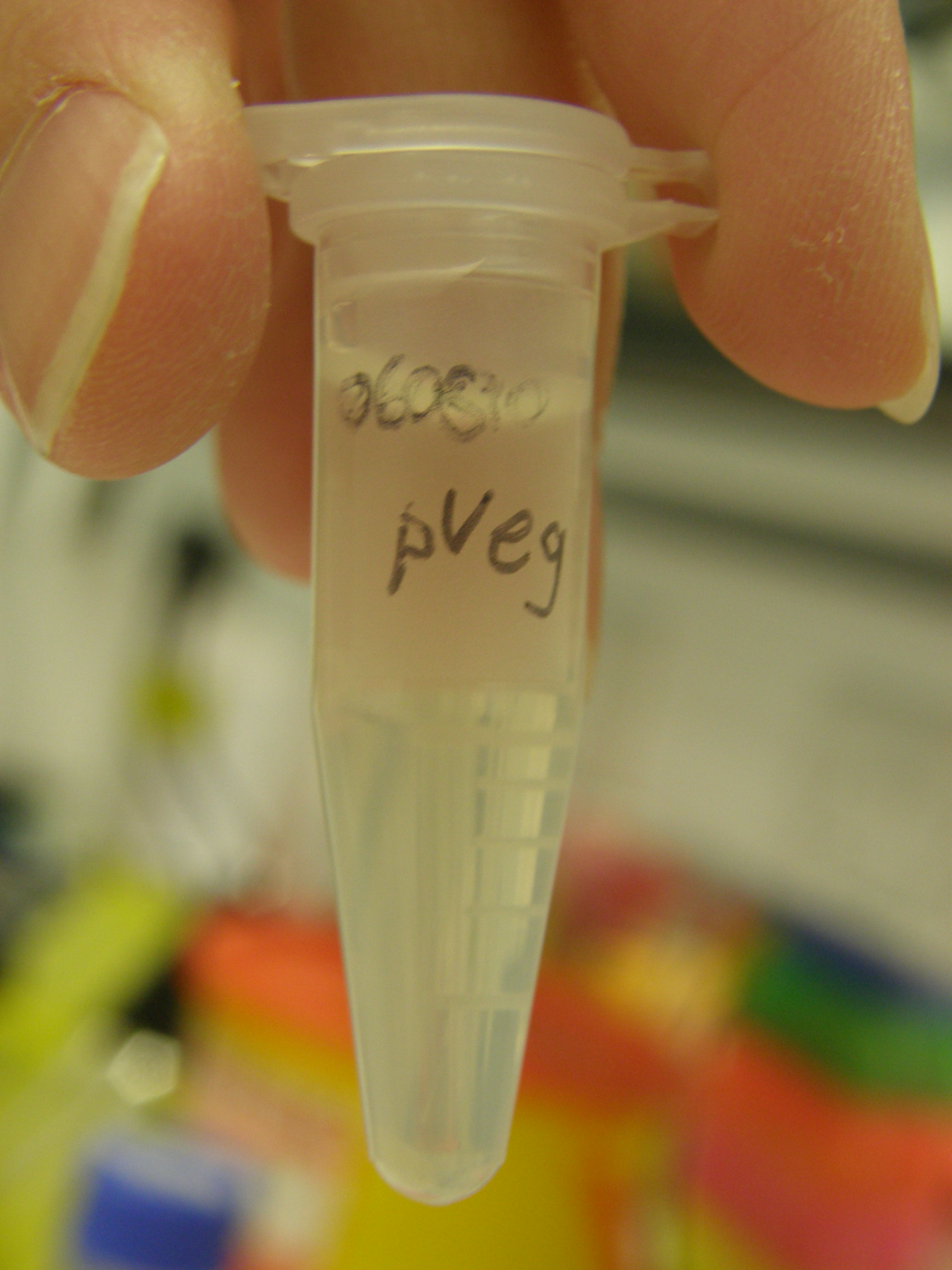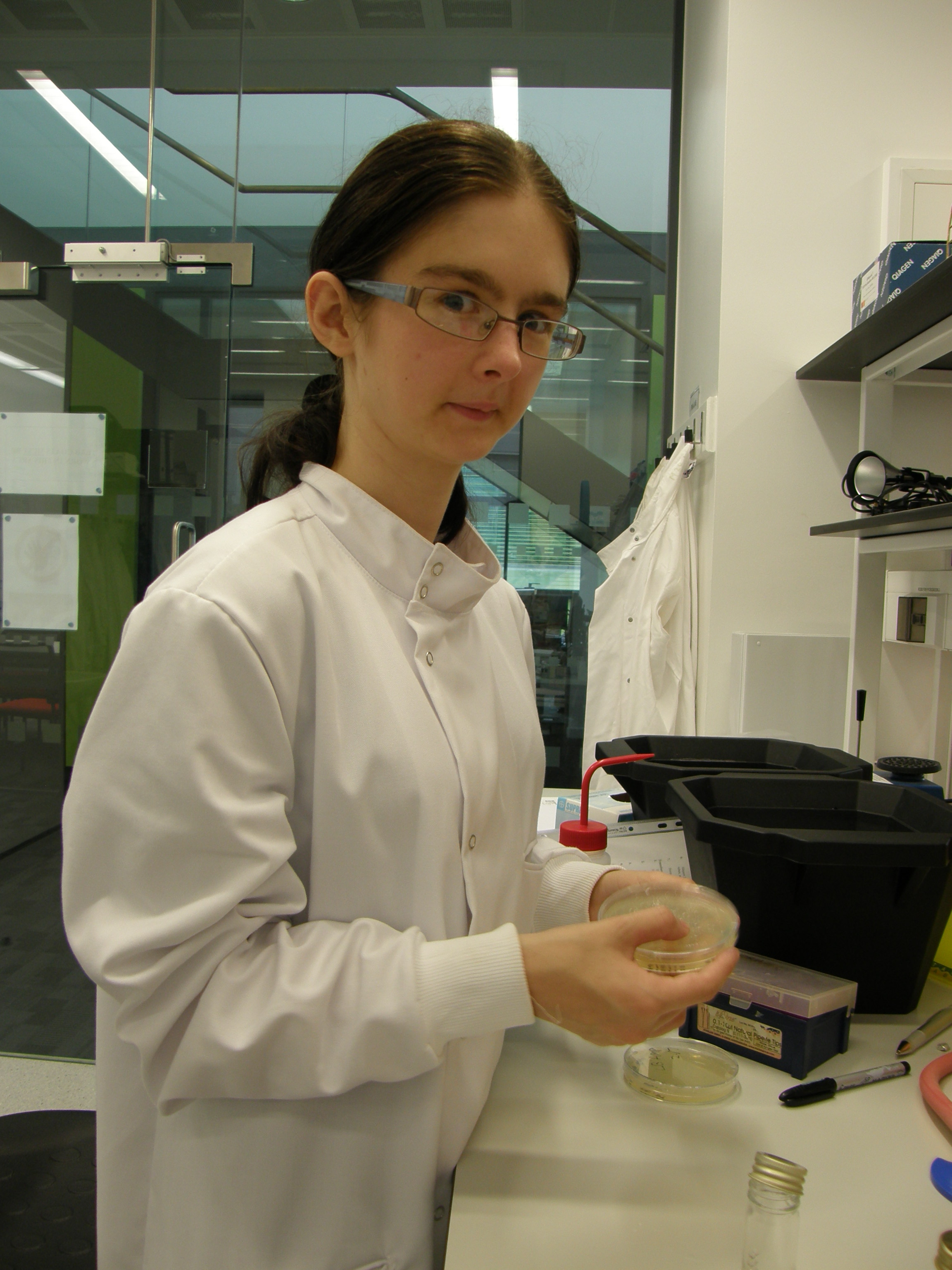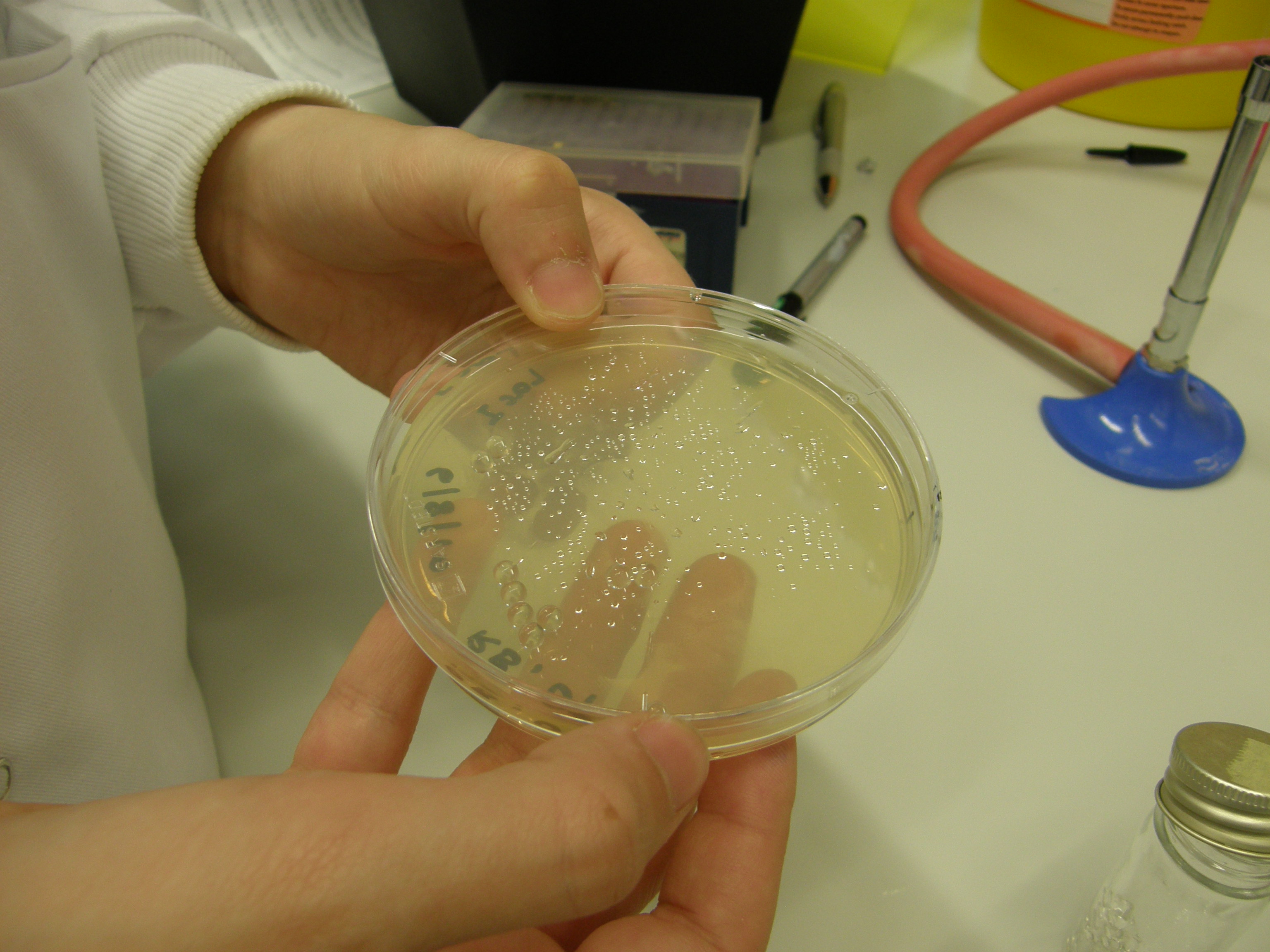Team:Newcastle/6 August 2010
From 2010.igem.org

| |||||||||||||
| |||||||||||||
Contents |
Gel Electrophoresis for Amplified Pspac_oid promoter and lacI
Aim
The aim of the experiment is to perform gel electrophoresis for the two PCR reactions viz. lacI and Pspac_oid promoter which took place yesterday 5th August, 2010 and thus confirm that they were successful.
Materials and Protocol
Please refer to: Gel electrophoresis.
Result
- Lane 1: 1kb DNA ladder
- Lane 2: Plamid pMutin4 containing lacI
- Lane 3: Plamid pMutin4 containing Pspac_oid promoter
- Lane 4: 100bp DNA ladder
| Pspac_oid pormoter | lacI | |
|---|---|---|
| Size of the Fragment (in bp) | 2072 approx. | 1400 approx. |
Table 1: Table represents the size of the fragments represented as bands on the gel in their corresponding lanes.
Discussion
We found a band in the lanes 2 of the correct size but lane 3 did not contain any band.
Conclusion
This experiment shows that the PCR reaction was successful for the lacI fragment apart from Pspac_oid promoter which was present in the lane 3 and did not show any band. As we got a band for lacI, we can conclude that the plasmid pMutin4 is intact. But we still are not getting a band for Pspac_oid pomoter. This could be because of the following problem:
- Melting temperature could be incorrect.
Amplification of Pspac_oid promoter by PCR
Aim
The aim of this experiment is to amplify Pspac_oid promoter fragment from plasmid pMutin4 for the construction of rocF BioBrick with the help of 2 different Phusion PCR.
Materials and Protocol
Please refer to PCR for Phusion PCR protocol. The details for the 2 PCR reactions are mentioned below:
PCR
| Tube | Part to be amplified | DNA fragment consisting the part | Forward primer | Reverse Primer | Melting Temperature (Tm in °C) | Size of the fragment (in bp) | Extension time* (in seconds) |
|---|---|---|---|---|---|---|---|
| 1 | Pspacoid Promoter | pMutin4 | P1P1 forward | P2P1 reverse | 49 | 106 approx. | 15 |
| 2 | Pspacoid Promoter | pMutin4 | P1P1 forward | P2P1 reverse | 50 | 106 approx. | 15 |
Table 2: Table represents 3 different Phusion PCR reactions for the amplification of Pspac_oid promoter, so that it can be ligated together with other fragments for the construction of rocF with the help of Gibson Cloning method.
- The extension rate of the Phusion polymerase is 1Kb/ 30 seconds. Thus the extension time of each and every PCR reaction is slightly different.
- For learning about the rocF fragments, please refer to the Cloning strategy for rocF.
Discussion
All the 2 Phusion PCR reactions were done however, gel electrophoresis will be done later today, to check whether the fragments have actually amplified or not.
Conclusion
Today afternoon, we would be running gel electrophoresis to check the outcome of the 2 PCR reactions and later all the fragments will be ligated with help of Gibson protocol if the fragments have amplified.
Gel Electrophoresis for Amplified Pspac_oid promoter
Aim
The aim of the experiment is to perform gel electrophoresis for the two PCR reactions for Pspac_oid promoter which took place today morning and thus confirm that they were successful.
Materials and Protocol
Please refer to: Gel electrophoresis.
Result
- Lane 1: 1kb DNA ladder
- Lane 2: Plamid pMutin4 containing lacI
- Lane 3: Plamid pMutin4 containing Pspac_oid promoter
- Lane 4: 100bp DNA ladder
| Pspac_oid pormoter | lacI | |
|---|---|---|
| Size of the Fragment (in bp) | 2072 approx. | 1400 approx. |
Table 1: Table represents the size of the fragments represented as bands on the gel in their corresponding lanes.
Discussion
We found a band in the lanes 2 of the correct size but lane 3 did not contain any band.
Conclusion
This experiment shows that the PCR reaction was successful for the lacI fragment apart from Pspac_oid promoter which was present in the lane 3 and did not show any band. As we got a band for lacI, we can conclude that the plasmid pMutin4 is intact. But we still are not getting a band for Pspac_oid pomoter. This could be because of the following problem:
- Melting temperature could be incorrect.
lacI ligation (repeat)
Aim
We aim to repeat the ligation from week 12-17th July.
Materials and Protocols
Please refer to ligation for protocol. However, we did not do a positive control for this experiment.
Discussion
On Monday we will transform E.coli with the ligation product.
Results
Please refer to 09.08.10 for results.
lacI and pVeg spoVG Transformation
Aim
We aim to transform competent E.coli DH5α with pVeg spoVG and lacI in preparation for Gibson Cloning.
Materials and Protocol
Please refer to transformation for protocol.
Discussion
We expect cells transformed with lacI and pVeg to survive on the ampicillin plates.
Conclusion
Please refer to 09.08.10 for results.
 
|
 "
"



